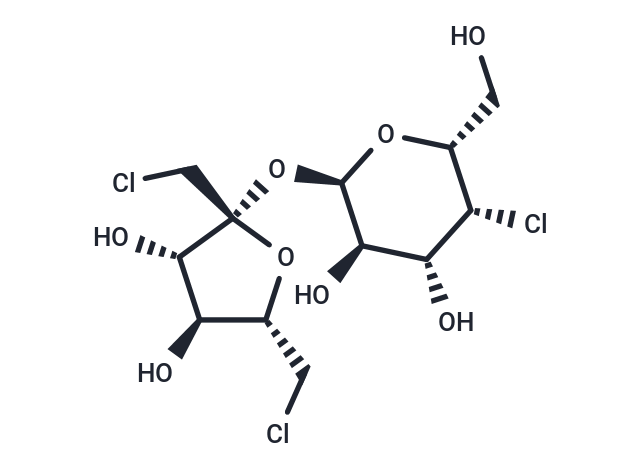Shopping Cart
- Remove All
 Your shopping cart is currently empty
Your shopping cart is currently empty

Sucralose is a non-nutritive artificial sweetener and sugar substitute that stimulates appetite in rodents by activating a conserved neural fasting response.

| Pack Size | Price | Availability | Quantity |
|---|---|---|---|
| 5 g | $29 | In Stock | |
| 10 g | $38 | In Stock |
| Description | Sucralose is a non-nutritive artificial sweetener and sugar substitute that stimulates appetite in rodents by activating a conserved neural fasting response. |
| In vitro | Using technetium-99m ((99m)Tc) to trace the morphology of erythrocytes in mice, along with the distribution of tissues traced by sodium pertechnetate (Na(99m)TcO(4)) and technetium-99m diethylenetriaminepentaacetate ((99m)Tc-DTPA), the impact of Sucralose on blood components was assessed. The results indicated that the blood components and cellular morphology of erythrocytes remained unchanged. |
| In vivo | The co-administration of peas and Sucralose to enteroendocrine cells induces higher levels of CCK (cholecystokinin) and GLP-1 (glucagon-like peptide-1) compared to their individual administration. |
| Alias | Trichlorosucrose, E955 |
| Molecular Weight | 397.63 |
| Formula | C12H19Cl3O8 |
| Cas No. | 56038-13-2 |
| Smiles | O([C@]1(CCl)O[C@H](CCl)[C@@H](O)[C@@H]1O)[C@H]2O[C@H](CO)[C@H](Cl)[C@H](O)[C@H]2O |
| Relative Density. | 1.69 g/cm3 |
| Storage | Powder: -20°C for 3 years | In solvent: -80°C for 1 year | Shipping with blue ice. | |||||||||||||||||||||||||||||||||||
| Solubility Information | H2O: 73 mg/mL (183.59 mM), Sonication is recommended. Ethanol: < 1 mg/mL (insoluble or slightly soluble) DMSO: 50 mg/mL (125.75 mM), Sonication is recommended. | |||||||||||||||||||||||||||||||||||
Solution Preparation Table | ||||||||||||||||||||||||||||||||||||
DMSO/H2O
| ||||||||||||||||||||||||||||||||||||

Copyright © 2015-2025 TargetMol Chemicals Inc. All Rights Reserved.